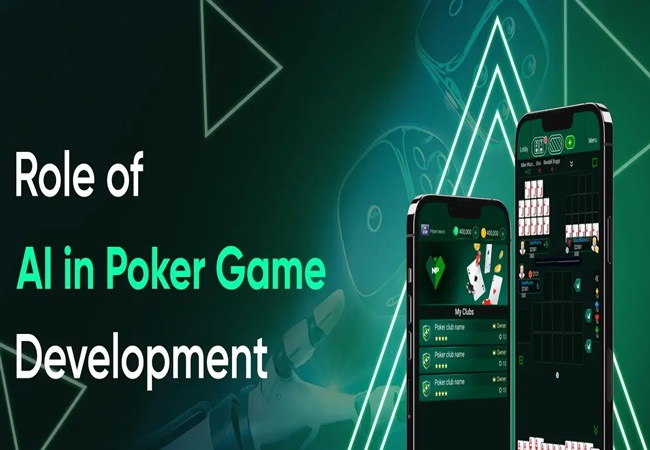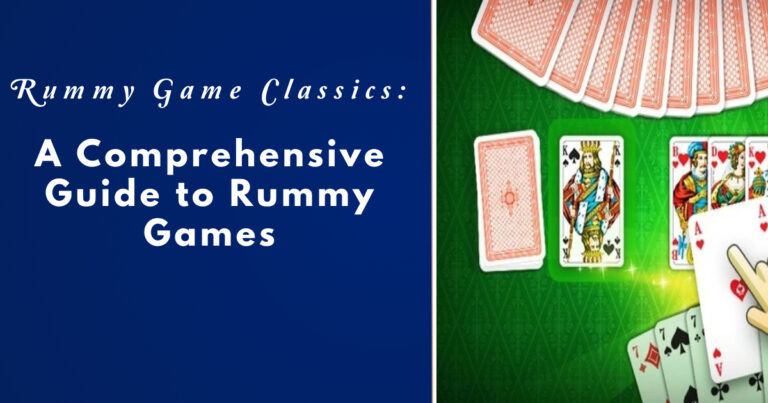How AI and Data Analytics Are Shaping Poker Strategy in 2025
Poker has always been a game of skill, intuition, and strategic decision-making, forming the foundation of any effective poker strategy. But in 2025, the game is undergoing a revolution, driven by artificial intelligence (AI) and advanced data analytics. These technologies are fundamentally changing how players train, strategize, and compete—both online and offline. What was once a game dominated by gut instinct and behavioral reads is now increasingly shaped by machine learning models, massive hand histories, and sophisticated real-time analytics—similar to innovations seen in the Best Rummy games.

The Evolution of Poker Strategy
Historically, poker strategy evolved through books, mentorship, and trial-and-error. Legendary players like Doyle Brunson and Phil Ivey built their reputations on sharp reads and psychological prowess. But in recent years, with the emergence of solvers and poker bots, the game has become more precise and mathematically grounded. In 2025, this trend has only intensified.
Today’s poker landscape sees professionals analyzing vast datasets to study opponents’ tendencies, plug leaks in their own games, and optimize bet sizing and range construction—much like the data-driven rise of Teen Patti Stars in the card gaming scene. This new era favors players who combine traditional skills with technological fluency.
The Role of AI in Modern Poker
AI’s influence in poker is most prominently seen through the rise of solvers—advanced software that computes game-theoretical optimal (GTO) strategies. Tools like PioSOLVER, GTO+, and MonkerSolver are now standard in every serious player’s toolkit. However, in 2025, AI has gone even further:
1. Next-Gen Solvers and Real-Time Assistance
Modern solvers not only offer post-game analysis but are now integrated with real-time learning systems to refine and enhance poker strategy. Using GPUs and cloud computing, they simulate millions of hands in seconds, helping players make optimal decisions during gameplay—especially in online settings.
Although major platforms strictly prohibit real-time assistance (RTA), the existence of these tools has pushed players to study harder and more effectively. AI-powered assistants also serve as legal training partners, mimicking diverse opponent strategies and exposing weaknesses in a player’s approach.
2. Neural Networks for Opponent Profiling
AI now uses deep learning models to profile opponents based on their behavior across multiple sessions, significantly enhancing poker strategy development. By analyzing patterns in betting, fold frequencies, timing tells, and bet sizing, neural networks can classify player types (e.g., loose-aggressive, tight-passive) with remarkable accuracy.
This profiling allows pros to tailor their strategies against specific player archetypes. For instance, against a data-flagged “bluff-heavy” opponent, an AI might suggest lighter call-downs or induce aggression through check-raises.
Data Analytics: The Engine Behind Poker AI
While AI handles strategy simulation, it’s data analytics that feeds the engine. Online platforms collect millions of hands daily, which are then anonymized, structured, and analyzed. Data professionals, including statisticians and data scientists, are now part of many poker teams.
Here’s how data analytics is reshaping poker strategy:
1. Hand History Analysis at Scale
In 2025, analyzing hand histories isn’t just about reviewing a few bad beats—it’s a core component of developing a winning poker strategy. Players now use dashboards powered by machine learning to scan thousands of hands and identify trends like win rates by position, flop aggression frequencies, and showdown percentages.
Dashboards offer visual insights—heat maps, variance curves, and range distributions—that were unimaginable a decade ago. Tools like Hand2Note, PokerTracker 5, and Holdem Manager have integrated AI modules that suggest strategy improvements automatically.
2. Meta-Game Adjustments via Trend Detection
Data analytics also helps players identify larger global trends across the poker ecosystem. For example, if high-stakes games show a shift toward smaller 3-bets or increased turn aggression, pros adjust their strategies accordingly. This real-time adaptation allows them to stay ahead of the curve.
Some elite stables even employ analysts to monitor site-wide trends, create predictive models, and advise players on optimal poker strategy during major tournament series..
AI-Driven Training and Coaching
Poker coaching has been transformed by AI as well. Rather than one-size-fits-all lessons, modern training platforms offer personalized learning paths based on player strengths, weaknesses, and goals.
1. Simulated Environments
AI simulates countless hand scenarios to test decision-making under pressure. Players train in controlled environments where variables like stack depth, opponent type, and board texture are tweaked dynamically. This not only improves situational awareness but also accelerates the development of effective poker strategy.
2. Automated Leak Finders
Training software now includes automated leak detection. By running a player’s game through a solver and comparing it to GTO baselines, the system highlights areas of deviation. Whether it’s overfolding in 3-bet pots or misplaying draws, players receive detailed, actionable feedback to refine their overall poker strategy.
Platforms like Run It Once, Raise Your Edge, and Upswing Poker have begun integrating AI tutors that explain the logic behind every decision, making even complex GTO concepts accessible to intermediate players.

Impact on Live and Online Play
1. Live Poker: Balancing Instinct with AI Prep
Live poker remains a more psychological arena, but even here, AI preparation makes a difference. Players now enter poker tournaments with extensive notes on common player pools, historical tendencies, and scenario-based rehearsals.
Some pros even wear biometric devices (legal under certain rules) to monitor stress levels during play, helping them stay composed and make better decisions.
2. Online Poker: A Data-Driven Battlefield
Online poker in 2025 is where AI and analytics truly shine, revolutionizing modern poker strategy. With the help of HUDs (Heads-Up Displays), players monitor dozens of variables—VPIP (voluntarily put money in pot), aggression factor, C-bet frequency, and more. Advanced HUDs even provide alerts for exploitable patterns.
To counter this, poker sites have implemented stricter anti-AI policies, including detection algorithms and security audits. The tension between innovation and fairness remains a central issue in the poker tech landscape.
Ethical Concerns and Regulation
The growing use of AI in poker raises ethical questions. Where should the line be drawn between study tools and real-time assistance? Is it fair for professionals to use data analysts against recreational players?
Poker platforms are working to address these concerns by improving security and enforcing strict policies to protect fair play and maintain poker strategy integrity. AI detection systems now monitor behavior anomalies, click patterns, and response times to flag potential unfair play.
Meanwhile, the community is pushing for greater transparency. Training sites now disclose the scope of AI tools used and advocate for ethical guidelines around their implementation.
Looking Ahead: The Future of AI in Poker
As AI continues to evolve, we may soon see real-time GTO coaching embedded into AR glasses for live players or voice-activated AI assistants helping with in-game math. But regardless of how advanced the technology becomes, the essence of poker—reading people, making tough decisions, and adapting under pressure—will always remain.
In 2025, the best players are those who blend human intuition with machine precision—skills also valued in successful poker affiliate strategies. They don’t just learn from AI—they collaborate with it, using its insights to sharpen their edge and deepen their understanding of the game.
Conclusion
AI and data analytics have ushered in a new era of poker strategy, turning the game into a fascinating fusion of mathematics, psychology, and machine learning. In 2025, poker is not just about playing the cards you’re dealt, but about leveraging technology to understand those cards—and your opponents—at a level never before possible. As the line between man and machine blurs, one thing is clear: the future of poker belongs to those who embrace the power of both.

5 FAQ’s: Poker Strategy in 2025: The AI Edge
1. How is AI changing poker strategy in 2025?
AI is revolutionizing poker by providing advanced solvers, real-time analysis, and neural networks for opponent profiling, helping players refine strategies with precision.
2. What role does data analytics play in modern poker?
Data analytics powers large-scale hand history analysis, trend detection, and dashboards that highlight betting patterns, win rates, and exploitable tendencies.
3. How are AI tools used in poker training and coaching?
AI-driven training platforms simulate real-game scenarios, detect leaks in a player’s strategy, and provide personalized learning paths for faster improvement.
4. Does AI impact live poker as much as online poker?
While online poker relies heavily on data and HUDs, live poker players benefit from AI prep, scenario simulations, and even biometric monitoring to improve decision-making.
5. What ethical concerns exist around AI in poker?
The main concerns involve fairness and misuse, particularly with real-time assistance. Poker sites now enforce strict rules and detection systems to maintain integrity.







